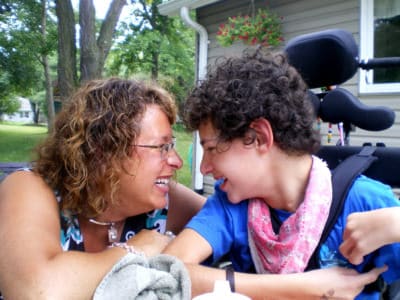
All the research agrees that a child’s early years are critically important for development. That is why, since 1986, the federal government has supported programs that offer early intervention services that prevent, treat, or ameliorate delays in children ages birth to three-years old.
The program is authorized by the Individuals with Disabilities Education Act (IDEA), the same legislation that governs the rights of children with disabilities in K-12 education. Part C of IDEA provides for these early intervention programs. Because the birth to three years’ window is so critical to development, effective early intervention services can significantly reduce the cost of later special education and other services a child would likely need, reducing the financial burden on public schools and health-care programs like Medicaid. That makes the federal, state, and local dollars spent on early intervention a great investment.
In North Carolina, the program is administered through the Department of Health and Human Services Division of Public Health as the NC Infant Toddler Program (ITP). The ITP funds and oversees sixteen Children’s Developmental Service Agencies (CDSAs) statewide. Twelve are part of state government, and four operate in cooperation with municipal governments and other partners.
Who does it serve?
The program serves children from birth to three years with a developmental delay or a condition that is likely to cause developmental delay. These delays and conditions may be identified at birth or later. Parents, hospitals, physicians, or other health-care providers, child-care providers, public health or other social service agencies who have concerns about how a child sees, hears, moves, communicates, learns, plays, or interacts with others can contact their regional CDSA to make a referral. A child born very prematurely, for example, may be identified at birth as a candidate for early intervention services and referred by the hospital where he or she was born.
What kind of “delays” and “conditions” are we talking about?
The North Carolina Infant Toddler Program offers the following description:
A delay can be in one or more of the following areas:
- thinking and learning
- moving, seeing, hearing, and health
- understanding and using sounds, gestures, and words
- responding to and developing relationships
- taking care of one’s self when doing things like feeding or dressing
An established condition is a diagnosed health condition that will likely cause a developmental delay. This includes:
- genetic disorders, such as Down Syndrome or cystic fibrosis
- congenital infections, such as HIV and rubella
- central nervous system disorders, such as cerebral palsy and epilepsy
- hearing loss
- vision problems
- autism
More detailed eligibility criteria are available here.
What happens after a child is referred?
When a child is referred he or she is assigned a service coordinator who will contact the family and arrange for evaluation. The CDSA will then use the results of the evaluation to decide whether the child is eligible for services or should be referred to other community resources. If a child is found to be eligible for services the CDSA will work with the family to develop an Individualized Family Services Plan (IFSP) that details what services the child and family will receive. Services may include family training or counseling; assistive technology; speech, occupational, or physical therapy; audiology; medical services; nursing services; and others. The services are designed to meet the family’s needs and priorities.
An important principle in early intervention is that services should be provided in the child’s natural environment: “to the maximum extent appropriate to the needs of the child, early intervention services must be provided in natural environments, including the home and community settings in which children without disabilities participate” (34 CFR §303.12(b)). For most young children, that means services should be provided in the child’s family home. Services might also be appropriate in a day-care setting or elsewhere in the child’s community. The IDEA requires that services for students with disabilities be provided in the least restrictive environment appropriate to the needs of the student; this holds for early intervention just as it does for other educational settings.
Want to know more?
The U.S. Department of Education’s page on Early Intervention
Recommended reading

